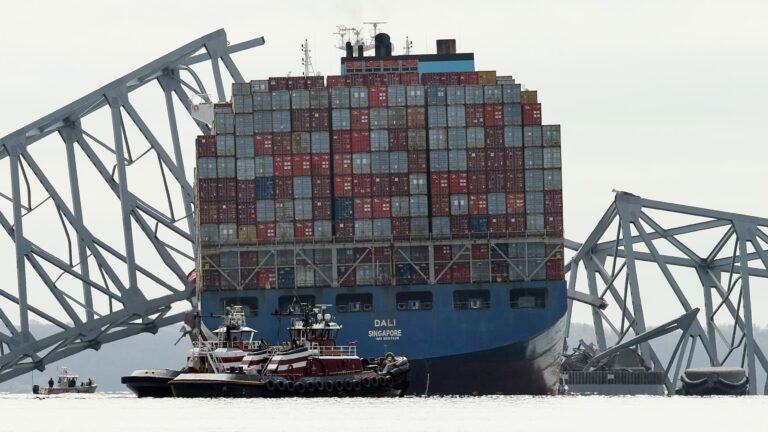The cargo ship Dali sits underwater after colliding with the Francis Scott Key Bridge and collapsing on March 26, 2024 in Baltimore, Maryland.
Kevin Dietch | Getty Images
Engineers in Maryland began lifting a section of the Francis Scott Key Bridge out of Baltimore’s waterway on Saturday, the first step in a long process to reopen the city’s shipping port.
“I cannot overstate the importance of this initial movement of this bridge and wreckage today,” he said. Governor Wes Moore at a press conference on Saturday. “The complexity of this cannot be overstated.”
The U.S. Coast Guard estimates six people are missing after the Key Bridge collapsed after a container ship collided with a bridge pillar early Tuesday morning.
“We will never lose sight of the humanitarian aspects of this crisis,” Baltimore Mayor Brandon Scott said Saturday.
In the days since the collapse, the Port of Baltimore, the 11th largest port in the United States, has been suspended until further notice, forcing shipping companies to divert to other ports.
Government officials at the federal, state, and local levels have mobilized teams to begin efforts to get the ports back up and running. President Joe Biden is scheduled to visit the city next week and has pledged that the federal government will pay for the full cost of repairing and rebuilding the bridge.
To carry out the bridge’s first lift on Saturday, engineers cut away a section of the bridge to make it easier for a crane to handle. Once the part is cut, engineers strap it, rig it, and lift it onto a barge to take it out of the waterway.
If successful, this process could be replicated on other parts of the bridge, clearing the way for some traffic to resume, allowing more vessels to assist in the restoration of the bridge site, and potentially Some commercial vessels may also become available.
“If we can reopen the shipping lanes, we may be able to reuse them for commercial assets, but we need to be clear about that first, and we’re working toward that,” said Shannon Gilreath of the U.S. Coast Guard.
Economists say the closure of the Port of Baltimore likely won’t have a major macroeconomic impact, but it’s still a major disruption that will complicate shipping supply chains.
“This is not just a Maryland issue. This is an economic issue for our country,” Governor Moore said. “Our economy depends on the Port of Baltimore, and the Port of Baltimore depends on shipping traffic.”


